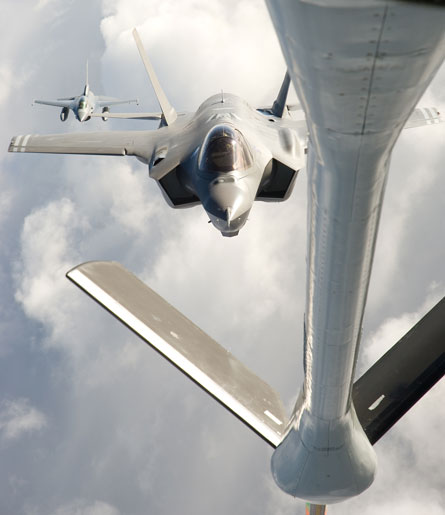The US Department of Defense, as expected, will hold onto funds to buy the next six Lockheed Martin F-35B Joint Strike Fighters, but will release funds to buy the next six F-35As.
John Young, undersecretary of defense for acquisition, technology and logistics, signed the order on the JSF programme's second batch of low-rate initial production aircraft. The order means that funds to buy the short take-off and vertical landing F-35Bs will be withheld until at least late May or early June, when the first prototype aircraft - BF-1 - is scheduled to fly for the first time.
"The STOVL approval is contingent on certain events and a leadership review" by Young, the DoD says, without further elaboration.
 |
|---|
© Lockheed Martin |
Lockheed's conventional take-off and landing AA-1 prototype (pictured above during recent inflight refuelling trials) first flew in December 2006, but the BF-1 airframe is the company's first to incorporate a "weight-optimised" design. The lighter airframe shaves more than 900kg (2,000lb) off the original design, and adds new aerodynamic and propulsion features to compensate for a large weight growth detected early in the aircraft's development.
BF-1 is scheduled to enter hover pit tests in mid-May and, although it should fly within two months, the aircraft is not expected to fly in STOVL mode for at least eight months. The hover pit tests are critical for "retiring risk" for STOVL-mode tests later in the year.
The STOVL-variant's unique engine - a Pratt & Whitney F135, including a Rolls-Royce shaft-driven lift fan - is on track to overcome a nagging reliability problem that causes a blade to prematurely fail in the low-pressure turbine.
The JSF programme is scheduled to build 12 aircraft this year, as well as to receive long-lead funding to start building the next 19 aircraft in 2009. Next year's production lot should include the first three LRIP fighters to be purchased by foreign partners - the Netherlands and the UK.
Source: Flight International
















